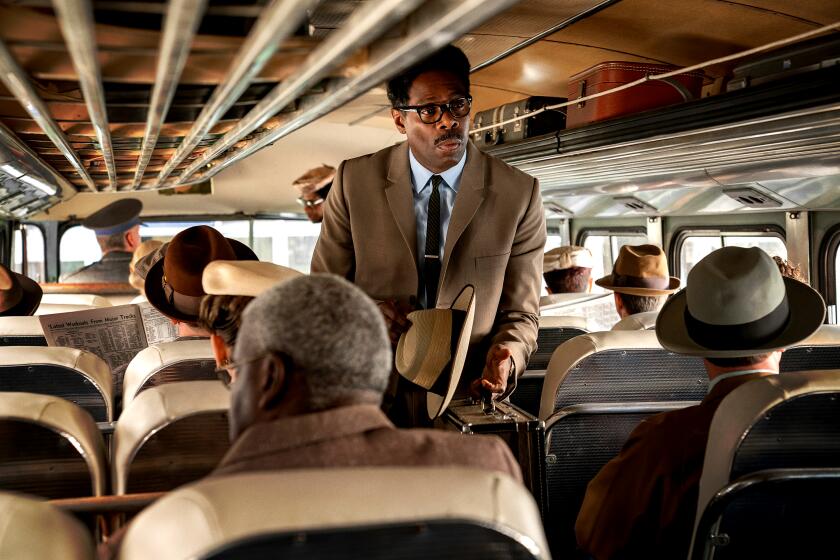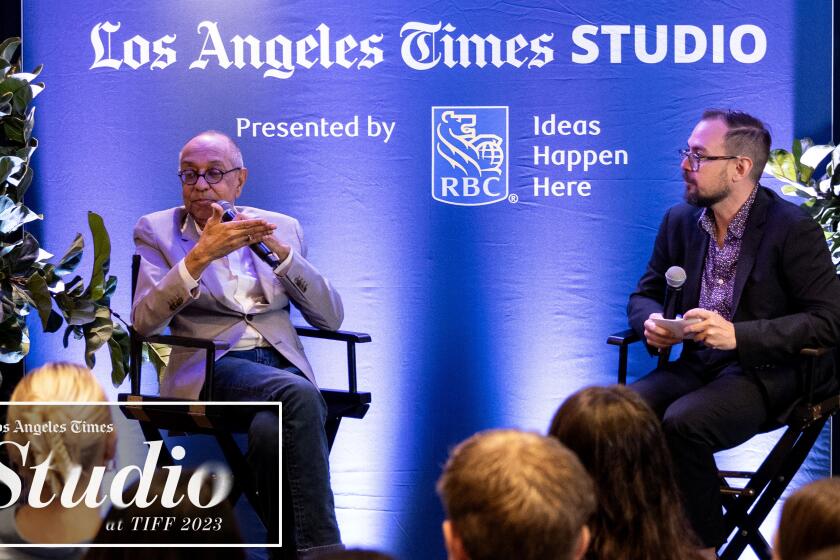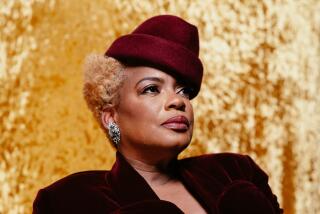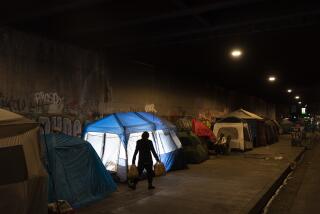Screenwriter pays tribute to ‘the invisible men’ of the movement with ‘Rustin’

- Share via
Going into the writing process, my hope was to write a film that honored Bayard Rustin and the other invisible men.
I learned about Bayard Rustin, the genius behind the March on Washington, in my high school years. But not in history classes. He didn’t exist there. I stumbled across Bayard’s name the same way all teenagers find things they aren’t supposed to — in my parents’ basement one night randomly searching the internet. At the time, I was just beginning to come to terms with my sexuality. I already knew that being Black in America came with many well-documented challenges, so being Black and openly gay felt like a mission impossible without a road map to positive outcomes.
Finding Bayard that night didn’t quiet my fears completely, but I’d found a beacon. Knowing that a Black man who was openly gay in the ’40s and ’50s not only survived but helped change the course of history deeply impacted my sense of self-worth and what felt possible for my life. How could it not? We’re talking about the man who mentored Dr. Martin Luther King Jr. and introduced him to the principles of non-violent resistance that made him a global icon. This striking, brilliant, defiantly gay Black man created space for himself in a movement where there was no space for men like him. Bayard Rustin essentially wrote the blueprint for Black liberation in this country, and subsequent liberation movements across the globe. Unfortunately, Bayard’s life represents history’s warning to Black queer and transgender people:
Keep it a secret, or you’ll become one.
The portrait of fiery civil rights leader Bayard Rustin could have been told with less restraint, but actor Colman Domingo shines in the title role.
Back in 2013, I heard that Dustin Lance Black was developing a film about Bayard Rustin and looking for someone to write it with him. I immediately leaped into action. When I met Lance we hit it off, and he hired me to write the screenplay. Back then, very few Black screenwriters were landing feature gigs, even on projects centering Black people, so I’m grateful for his giving a young Black gay screenwriter the opportunity to write Bayard’s story.
Early on, my instincts told me that the main story of the film — the action — should follow Bayard in the frenetic months leading up to the March for Jobs and Freedom. Within that framework, we see Bayard navigate rooms of power — where he’s viewed with suspicion — in order to launch the largest mass demonstration in modern history. However, locating Bayard’s personal story — the story George C. Wolfe and Colman Domingo would later bring to life with tenderness and soulful complexity—took more time and digging.
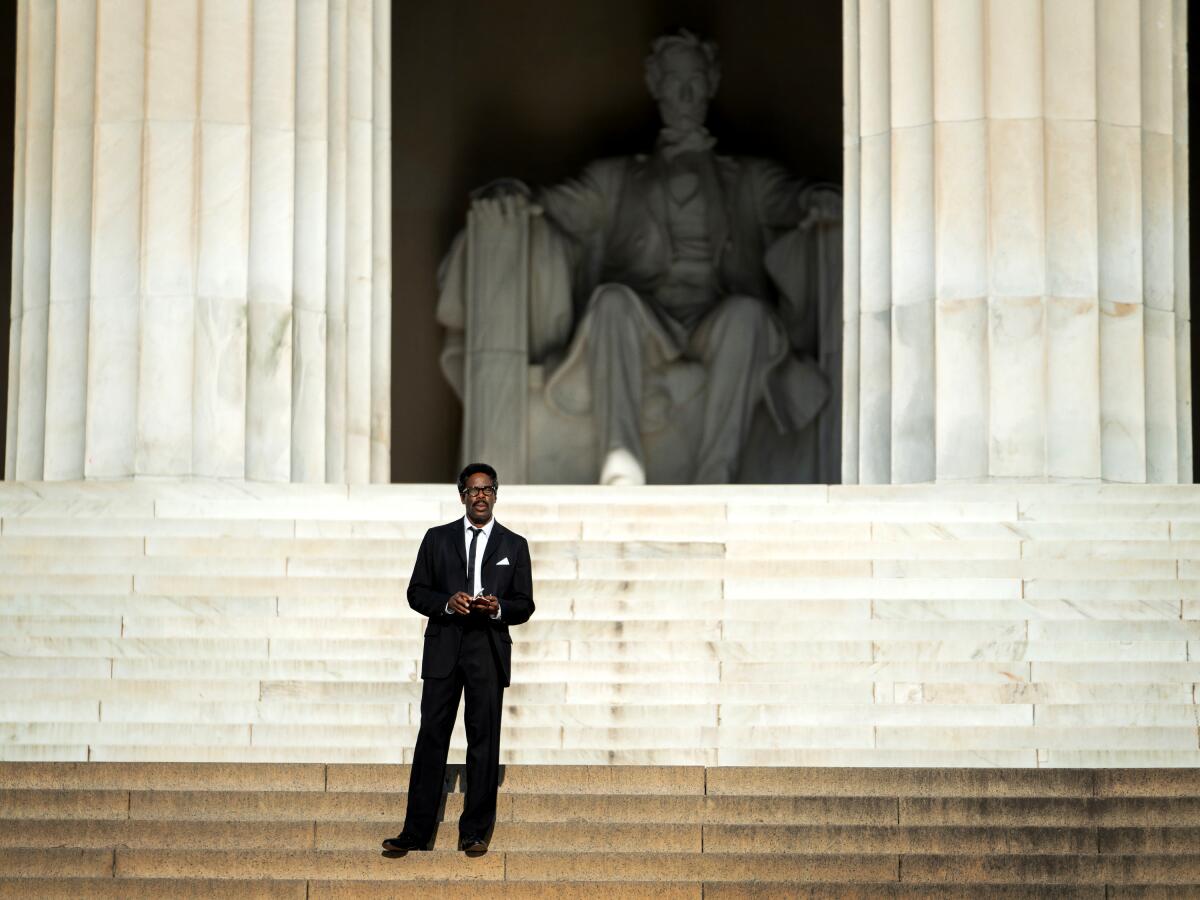
That spring, I moved to New York for three months to conduct almost 19 hours of one-on-one interviews with people who knew Bayard intimately or worked with him on the March. Each person spoke of Bayard’s courage, generosity and that mischievous streak that informed his penchant for making “good trouble.” They also described his uncanny, almost preternatural ability to see things members of the Black leadership of the era couldn’t. If being Black in America had equipped Bayard with the double-consciousness or “second-sight” that W.E.B. Dubois spoke of — the ability to see the social order and its systems in a way that goes undetected by the majority — then it only makes sense that his queerness added another lens to his toolbox. In other words, the “curse” identity that made Bayard Rustin a public enemy to J. Edgar Hoover’s FBI and caused the Black leadership to push him out of the movement was also an integral part of his gift as a political strategist.
I also learned that despite his openness with his sexuality and refusal to be shamed for it, he was privately tortured. Bayard was constantly surrounded by people who loved and admired him, but he always seemed distinctly alone. In reality, Bayard wasn’t alone. There were many other Black queer men, women and trans people who worked in the movement, but for many of them, being “out” wasn’t just an impractical notion, it was potentially not survivable.
In conversation at the L.A. Times Studio at the Toronto International Film Festival, Wolfe discussed his new Netflix movie, his approach to the platform’s viewership metrics and more.
I created the Elias character as a composite of the invisible Black men in Bayard’s orbit with whom Bayard shared deep camaraderie and affection. Bayard’s relationship with his white assistant, activist Tom Kahn, is a well-recorded open secret among those in the movement, but Bayard guarded the identities of men like Elias with his life. There was too much at stake. At the precipice of Black equality, homosexuality wasn’t so much a moral concern as it was a matter of racial treason — something our enemies could use to kill the movement.
I wrote the Bayard-Elias scenes with two intentions. As they carry out their affair in dark speak-easies and vanishing bedrooms, I wanted Bayard to find himself before a mirror — one that forces him to confront fears of rejection and shame that he pushes aside but can’t escape.
Just as important, I wanted their tragic romance to honor the sacrifices made by other nameless, faceless Black LGBTQ+ people who proudly fought for the freedom of all Black people. We may have been erased from historical records, but we were there. And Bayard Rustin was there from the very start. Having the opportunity to help share his story has been the honor of my life.
More to Read
From the Oscars to the Emmys.
Get the Envelope newsletter for exclusive awards season coverage, behind-the-scenes stories from the Envelope podcast and columnist Glenn Whipp’s must-read analysis.
You may occasionally receive promotional content from the Los Angeles Times.
